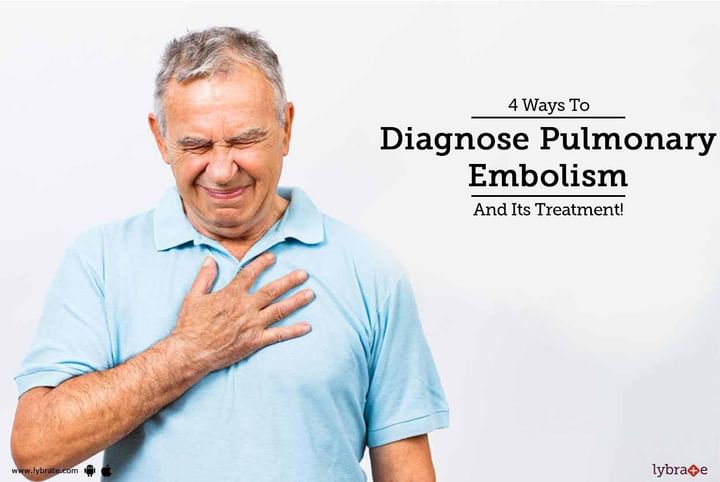4 Ways To Diagnose Pulmonary Embolism And Its Treatment!
When blood clot blocks one or more arteries in your lungs the condition is known as pulmonary embolism. It can cause a decrease in the oxygen levels in your blood, damage to your lungs due to sudden restrictions in the flow of blood along with adverse effects on other parts of your body. Life threatening blockage can cause death if left untreated and you should immediately contact your health care provider to get proper diagnosis. Pulmonary embolism requires various lab tests and generally requires short time to resolve.
Symptoms: The symptoms of pulmonary embolism mainly depend upon many factors pertaining to your previous medical history. Pulmonary embolism varies with the size of your lungs, the size of the clots formed in your blood, and any other underlying history of the heart or lungs. That said, pulmonary embolism has symptoms which are not similar to any two persons and will vary accordingly.
The common symptoms however may include the following and you are advised to opt for a health checkup if these are persistent in your body:
- Cough along with bloody sputum is a common symptom.
- Shortness of breath, which will become worse as the days passes by. They will appear suddenly and cause huge discomfort in breathing.
- Chest pain which may give you the feeling of a heart attack. The pain will intensify when you sit to eat or cough. Deep breath will cause problems too and will not go away easily with exertion.
- Some other symptoms include fever, excess sweat, irregular heartbeat and dizziness.
Pulmonary embolism can be diagnosed by the following methods:
- Electrocardiography (also known popularly as ECG) to measure your heart's electrical activity and functioning.
- CT plumonary angiography is gold standard for diagnosing pulmonary embolism.
- Chest x ray, which is a common and non invasive test to check your heart and lungs as well as the problems with any bones surrounding them.
- ECHO can detect secondary changes in heart due to pulmonary embolism.
Treatment of pulmonary embolism can be done with medicines if it is detected at an early stage or also if the clot is small. However, if the size of your clot is problematic and blocks the blood flow to your lungs or heart then surgery may be necessary. Open surgery and clot removal surgery are common in the treatment of pulmonary embolism and will require good regular follow up check ups. Regular leg exercises will also reduce the chances of any underlying disease and you should hence consult your doctor.



+1.svg)
